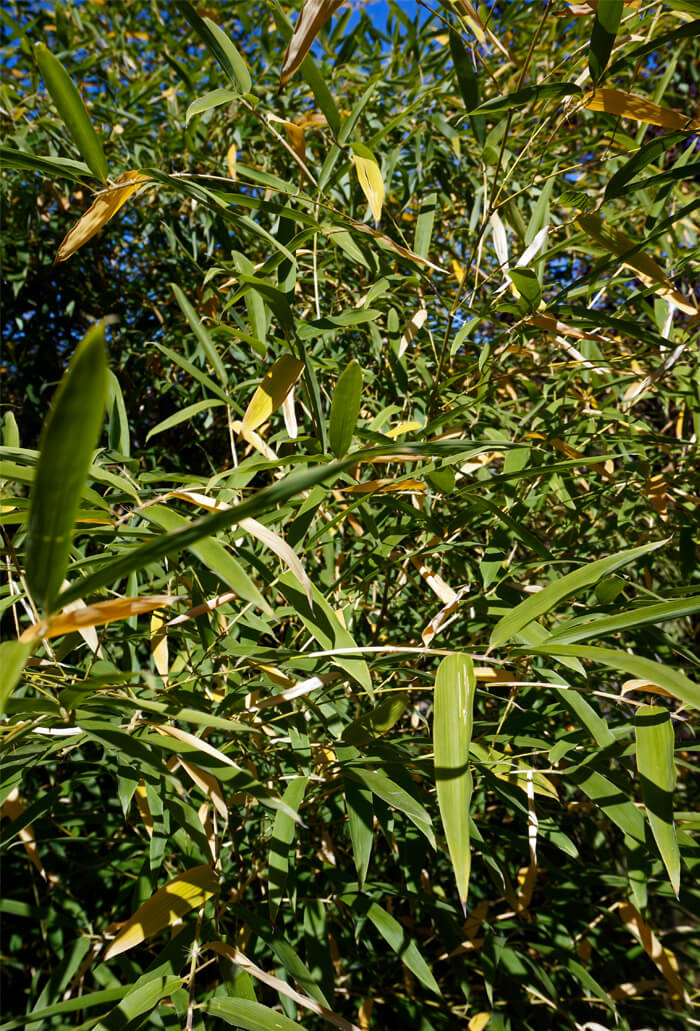Umbrella BambooFargesia murielaeHeight: 12' average mature height Hardiness Zones: 4-8 Find my zone Aspect: full shade to afternoon shade
This plant can't be shipped to Hawaii
Size Availability
A medium sized clumping bamboo with thick foliage with a similar appearance and growth habit as Fargesia nitida. This is perhaps the hardiest of any bamboo species to about -25F, allowing this species to grow in many areas as far north as Canada and even in western Alaska. Additionally, this was one of the first clumping bamboos to be introduced to the United States.Out of season.
Our main crop of most plants is available starting in late fall.
Additional batches of plugs and quarts are usually added in May.
Many of our plants are propagated in limited quantities and can sell out quickly when posted, get on the notification list below so you don't miss out. Add your email to be notified as soon as we have them back in stock:
This does NOT subscribe your email to any mailing lists, our system will only send an inventory notification message.
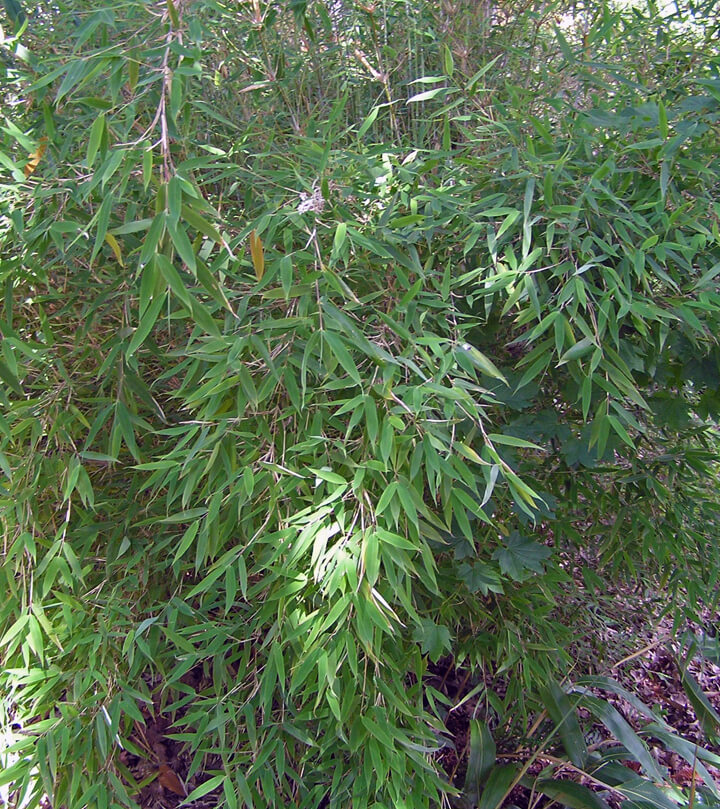
One of the most attractive aspects of Fargesia murielae is its growth habit - it is one of the tightest packed clumpers we've grown, with hundreds of canes growing from a small area. However, as the canes lean out at the edges of the grove and lean back to the ground, it creates a solid edge of foliage and usually avoids the "V" shape of other clumping bamboo, making it one of the best choices for a solid hedge. For comparison, a row of "V" shaped plants allows gaps between the bases of each plant (VVVVVVV) where Fargesia murielae is more solid, like a "U" (UUUUUUU). However, those wishing for a more upright grove are also in luck with this species, as the new growth is very upright and doesn't begin to lean over until the weight of the next season's leaves weigh the canes down. Trimming the top 20% of the leaning canes in June will send them springing back upright, a process that takes about five to ten minutes per year. This is also the case with Fargesia nitida.
In its native range in China, Fargesia murielae is one of the highest elevation bamboos. Although this provides its exceptional cold hardiness, it is adapted to the cooler and low humidity environment of the mountains. With afternoon shade and ample water, our plants thrive just fine even though we have frequent summer heat waves of 100+ degrees. When planted in full sun in our climate, the branches will have significant leaf damage and loss throughout July and August.
Fargesia murielae flowered extensively throughout the 1990's, so almost every plant in the United States is of the new generation and is not in danger of flowing for probably a hundred years or so. Many of the seedlings are still being identified as new varieties based on differences in habit, color, or general appearance, and so over time more named varieties will become available.
Related Care InformationPacking Plants For ShippingMost of our plants are shipped bare root while they are dormant from late November through April and ship via the U.S. Postal Service. Bamboo plants can be shipped in their containers year-round by UPS.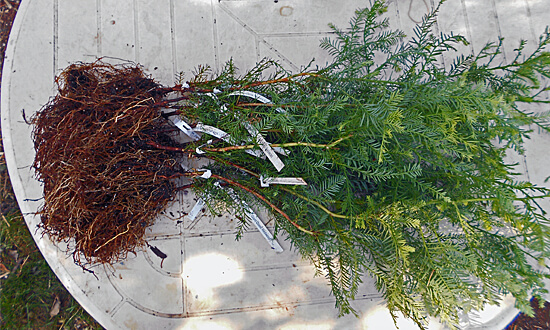 Bare root plants are soaked and wrapped together in bundles. ictured are 10x 24 inch tall Coast Redwoods. 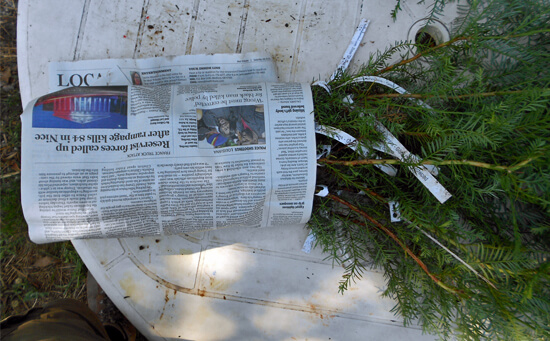 The bundled plants are wrapped in paper and labeled by variety. 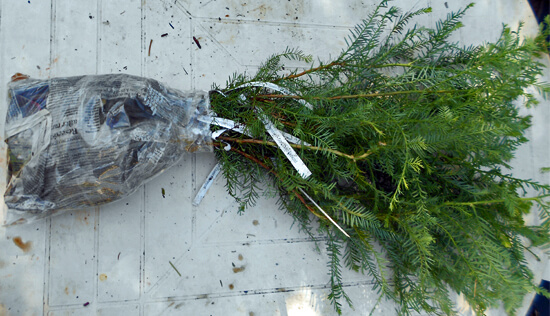 The bundle is wetted and bagged. 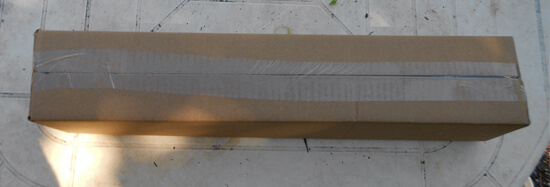 Bundles of plants are secured in long boxes. Pruning and Plant SizesWe prune both the tops and the roots of our plants at least once per year while they are growing in our nursery to ensure they develop a strong, dense form. Regular annual pruning goes a long way to ensure a healthy branching structure and this is often a missed step in many nurseries. Pruning a plant back hard after it has been neglected pruning-wise often results in an irregular branch habit or multiple leaders so we prune early and regularly instead. We also prune the roots of our plants while they are dormant which causes them to produce a much more branched structure and helps to elimate tangled masses that hinder future development. Plants that have been root pruned establish themselves much more quickly than root bound plants. Generally, hardwood plants will be pruned in the winter and conifers will be pruned in the summer.Before shipping plants we prune the tops and roots one last time. Conifers will usually have very little pruning except to balance out long branches. Shrubs are usually pruned to around 1-2 feet tall to encourage low branch development and small to medium sized trees are usually pruned to around 36-40 inches. Pruning trees at this height encourages dominant branches to begin forming around 3 feet from the ground which typically looks the best in most situations. However, if you want a tree to have branching start higher (some city codes require trees to not branch below 4 feet) we have longer boxes available. To request taller trees please contact us at least three days before your ship date. Depending on your location and the shipping routes there may be a fee for oversize package handling (usually about $15 for a 60 inch box). 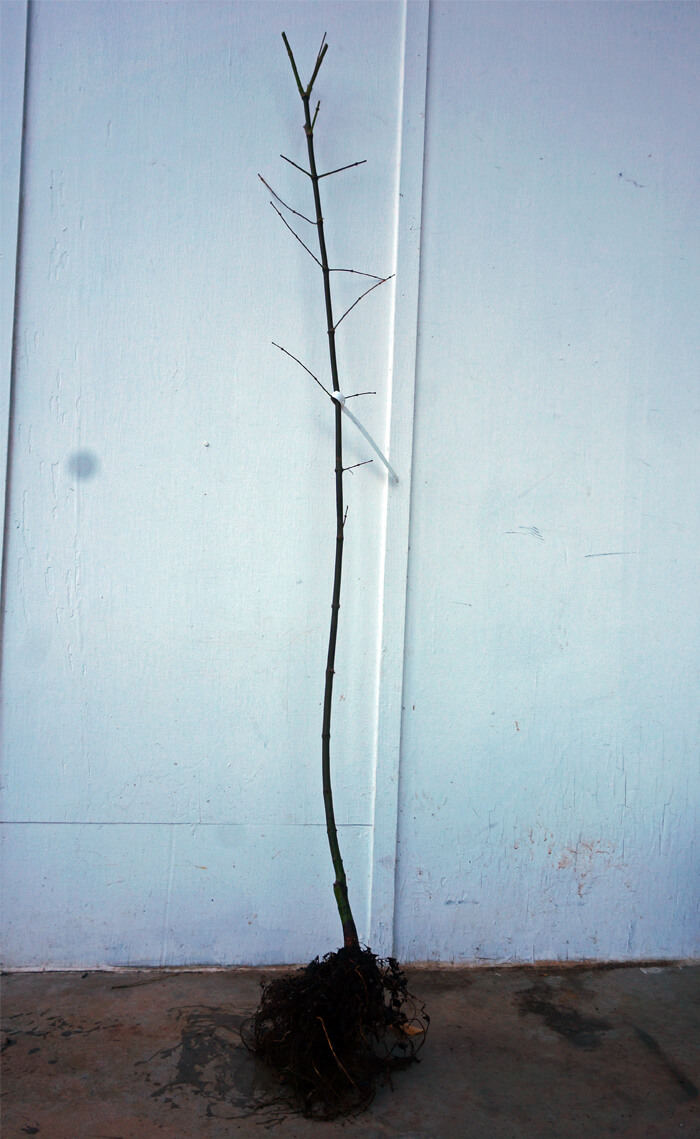 Tall trees (Oaks, Ginkgo, large Maples, etc.) are pruned to 40 inches to encourage crown development from about 36 inches and up 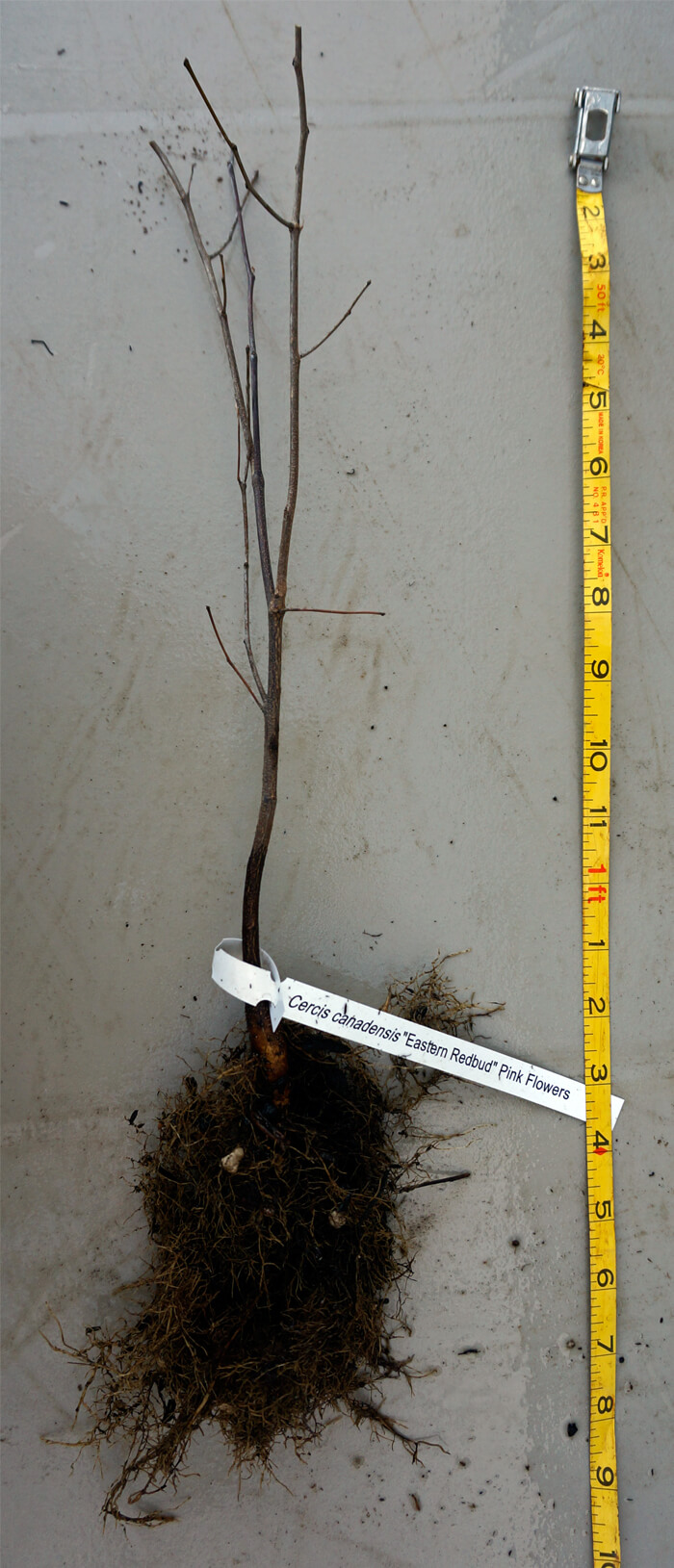 Small and medium trees (short Maples, Redbuds, Stewartia, etc.) are pruned 10-20 inches above the prune line from last year 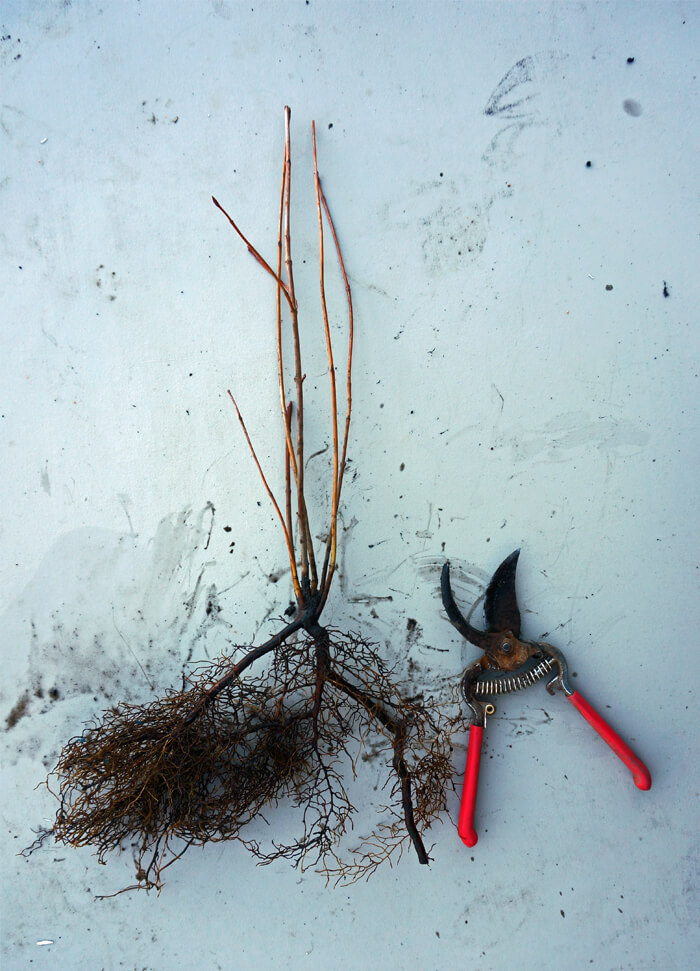 Shrubs (Weigela, Hydrangea, Viburnum, etc.) are pruned to 18 inches tall and root pruned one last time 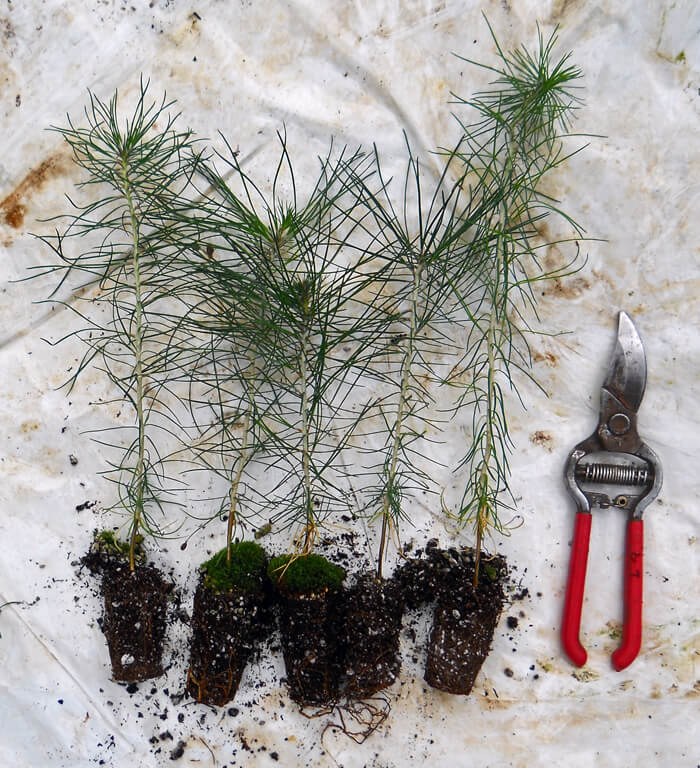 Small plug size Bamboo Plants Are Shipped In Their ContainersBamboo roots are not flexible and so plants have to be shipped in their containers. These plants are heavier and are shipped separately from bare root plants. Because they are potted they can handle longer transit times so can ship via UPS Ground instead of USPS Air Mail. Potted plants can also be shipped year-round.We regularly top our 1 gallon bamboo plants at 24-30 inches tall throughout the growing season. This results in dense, bushy foliage while allowing for economical shipping. From this size most running species will grow to 5-6 feet tall in the first spring and clumping species will usually grow to 4-5 feet tall. 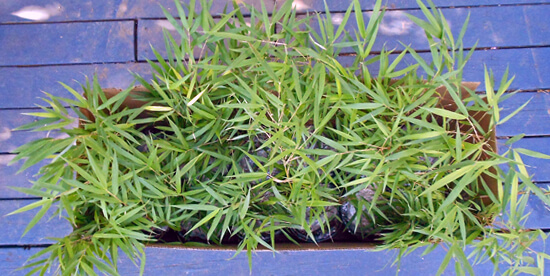 1 gallon bamboo plants strapped in and ready to be sealed. Unpacking Bare Root PlantsYou will be sent tracking details as soon as your plants are shipped. Unpack your plants as quickly as possible after they are delivered. We use two types of boxes, side-sealing and top-sealing. For boxes that are taped along the whole length you can cut the tape on either side and remove the plant bundles by cutting the tape holding the bundle to the bottom. For boxes that are sealed on the top and bottom, it is easiet to open the bottom of the box (the shipping label is at the top) and pull the bundle of plants out straight out. Check that the box is empty as there can be a second bundle of plants stuck towards the top.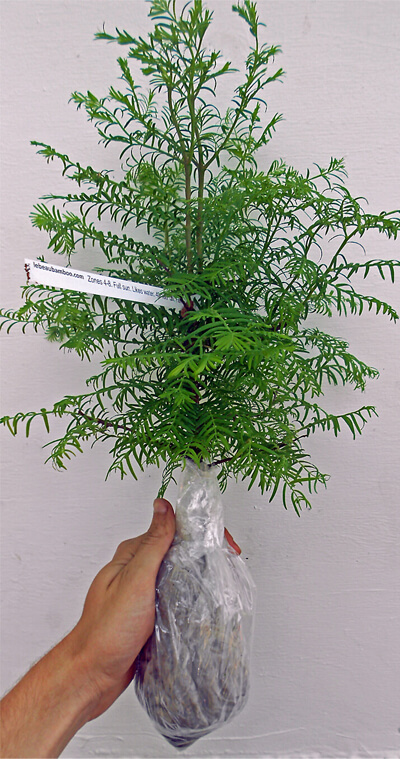 A bundle of trees. What if I am not able to plant right away?You can usually leave the plants in their shipping container unopened for 1-2 days if there were no shipping delays and you have received your plants from late November through February. Plants shipped when it is warmer can't stay in their packages for as long. |
Size Availability
Out of season.
Our main crop of most plants is available starting in late fall.
Additional batches of plugs and quarts are usually added in May.
Many of our plants are propagated in limited quantities and can sell out quickly when posted, get on the notification list below so you don't miss out. Add your email to be notified as soon as we have them back in stock:
This does NOT subscribe your email to any mailing lists, our system will only send an inventory notification message.
|


